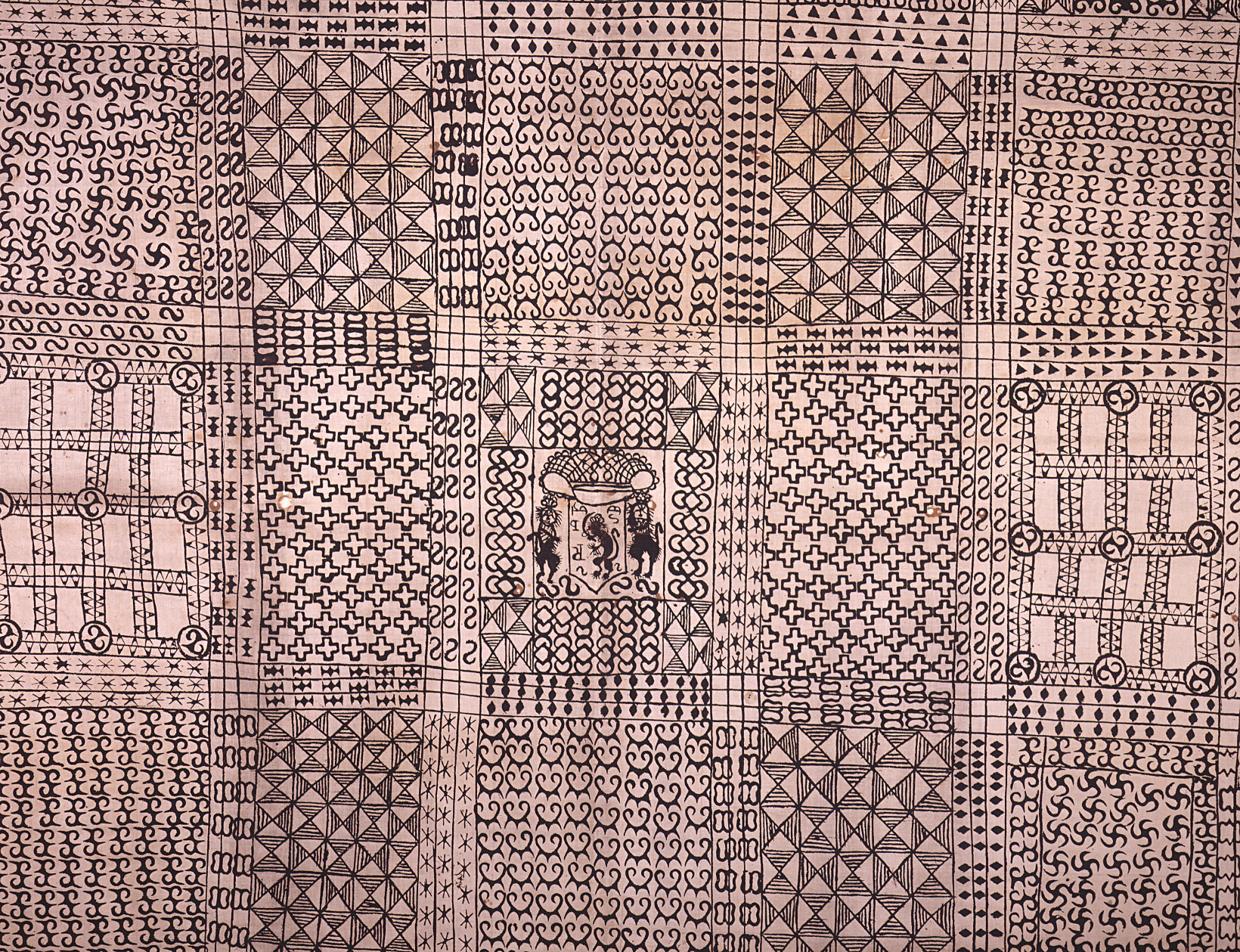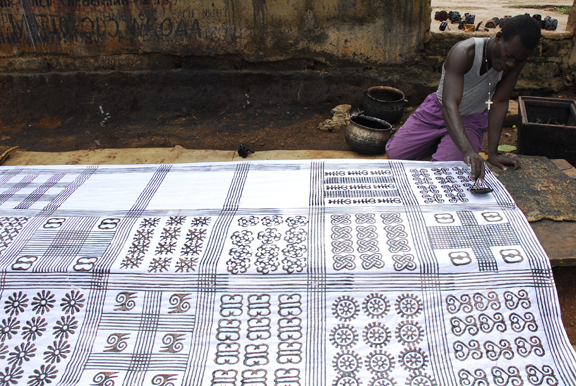Adinkra Symbols on:
[Wikipedia]
[Google]
[Amazon]
 ''Adinkra'' are
''Adinkra'' are  The symbols have a decorative function but also represent objects that encapsulate evocative messages conveying traditional wisdom, aspects of life, or the environment. There are many symbols with distinct meanings, often linked with proverbs. In the words of Kwame Anthony Appiah, they were one of the means for "supporting the transmission of a complex and nuanced body of practice and belief".
The symbols have a decorative function but also represent objects that encapsulate evocative messages conveying traditional wisdom, aspects of life, or the environment. There are many symbols with distinct meanings, often linked with proverbs. In the words of Kwame Anthony Appiah, they were one of the means for "supporting the transmission of a complex and nuanced body of practice and belief".
 Adinkra symbols were originally created by the Bono people of Gyaman. The Gyaman king, Nana Kwadwo Agyemang Adinkra, originally created or designed these symbols, naming it after himself. The Adinkra symbols were largely used on pottery, stools etc. by the people of
Adinkra symbols were originally created by the Bono people of Gyaman. The Gyaman king, Nana Kwadwo Agyemang Adinkra, originally created or designed these symbols, naming it after himself. The Adinkra symbols were largely used on pottery, stools etc. by the people of  The next oldest piece of ''adinkra'' textile was sent in 1825 from the Elmina Castle to the royal cabinet of curiosities in
The next oldest piece of ''adinkra'' textile was sent in 1825 from the Elmina Castle to the royal cabinet of curiosities in

 The present centre of traditional production of ''adinkra'' cloth is from Ghana, Ntɔnso, 20 km northwest of Kumasi and in Ivory Coast. Dark Adinkra ''aduro'' pigment for the stamping is made there, by soaking, pulverizing, and boiling the inner bark and roots of the badie tree (''
The present centre of traditional production of ''adinkra'' cloth is from Ghana, Ntɔnso, 20 km northwest of Kumasi and in Ivory Coast. Dark Adinkra ''aduro'' pigment for the stamping is made there, by soaking, pulverizing, and boiling the inner bark and roots of the badie tree (''
 ''Adinkra'' are
''Adinkra'' are symbol
A symbol is a mark, sign, or word that indicates, signifies, or is understood as representing an idea, object, or relationship. Symbols allow people to go beyond what is known or seen by creating linkages between otherwise very different conc ...
s from Ghana
Ghana (; tw, Gaana, ee, Gana), officially the Republic of Ghana, is a country in West Africa. It abuts the Gulf of Guinea and the Atlantic Ocean to the south, sharing borders with Ivory Coast in the west, Burkina Faso in the north, and Tog ...
that represent concept
Concepts are defined as abstract ideas. They are understood to be the fundamental building blocks of the concept behind principles, thoughts and beliefs.
They play an important role in all aspects of cognition. As such, concepts are studied by ...
s or aphorisms. ''Adinkra'' are used extensively in fabrics, logos and pottery. They are incorporated into walls and other architectural features. ''Adinkra'' symbols appear on some traditional Akan goldweights
Akan goldweights (locally known as mrammou) are weights made of brass used as a measuring system by the Akan people of West Africa, particularly for wei and fair-trade arrangements with one another. The status of a man increased significantly if h ...
. The symbols are also carved on stools for domestic and ritual use. Tourism has led to new departures in the use of the symbols in items such as T-shirts and jewellery.
 The symbols have a decorative function but also represent objects that encapsulate evocative messages conveying traditional wisdom, aspects of life, or the environment. There are many symbols with distinct meanings, often linked with proverbs. In the words of Kwame Anthony Appiah, they were one of the means for "supporting the transmission of a complex and nuanced body of practice and belief".
The symbols have a decorative function but also represent objects that encapsulate evocative messages conveying traditional wisdom, aspects of life, or the environment. There are many symbols with distinct meanings, often linked with proverbs. In the words of Kwame Anthony Appiah, they were one of the means for "supporting the transmission of a complex and nuanced body of practice and belief".
History
Bono
Paul David Hewson (born 10 May 1960), known by his stage name Bono (), is an Irish singer-songwriter, activist, and philanthropist. He is the lead vocalist and primary lyricist of the rock band U2.
Born and raised in Dublin, he attended ...
. Adinkra cloth was worn by the king of Gyaman, and its usage spread from Bono Gyaman to Asante and other Akan kingdoms following its defeat. It is said that the guild designers who designed this cloth for the Kings were forced to teach the Asantes the craft. Gyaman king Nana Kwadwo Agyemang Adinkra's first son, Apau, who was said to be well versed in the Adinkra craft, was forced to teach more about Adinkra cloths. Oral accounts have attested to the fact that Adinkra Apau taught the process to a man named Kwaku Dwaku in a town near Kumasi
Kumasi (historically spelled Comassie or Coomassie, usually spelled Kumase in Twi) is a city in the Ashanti Region, and is among the largest metropolitan areas in Ghana. Kumasi is located in a rain forest region near Lake Bosomtwe, and is t ...
. Over time, all Akan people including the Fante, Akuapem and Akyem all made Adinkra symbols a major part of their culture, as they all originated from the ancient Bono Kingdom.
The oldest surviving adinkra cloth was made in 1817. The cloth features 15 stamped symbols, including ''nsroma'' (stars), ''dono ntoasuo'' (double Dono drums), and diamonds. The patterns were printed using carved calabash stamps and a vegetable-based dye. It has resided in the British Museum
The British Museum is a public museum dedicated to human history, art and culture located in the Bloomsbury area of London. Its permanent collection of eight million works is among the largest and most comprehensive in existence. It docum ...
since 1818, when it was donated by Thomas E. Bowdich.
 The next oldest piece of ''adinkra'' textile was sent in 1825 from the Elmina Castle to the royal cabinet of curiosities in
The next oldest piece of ''adinkra'' textile was sent in 1825 from the Elmina Castle to the royal cabinet of curiosities in The Hague
The Hague ( ; nl, Den Haag or ) is a city and municipality of the Netherlands, situated on the west coast facing the North Sea. The Hague is the country's administrative centre and its seat of government, and while the official capital o ...
, in response to an assignment from Major F. Last, who was appointed temporary Commander of Dutch Gold Coast. He had the cloth commissioned from the Fante paramount chief of Elmina for William I of the Netherlands, which would explain why the coat of arms of the Netherlands
The coat of arms of the Kingdom of the Netherlands was originally adopted in 1815 and later modified in 1907. The arms are a composite of the arms of the former Dutch Republic and the arms of the House of Nassau, it features a checkered shield wi ...
is in the centre. The other motifs are typical of the older ''adinkras''. It is now on display in the National Museum of Ethnology in Leiden.
In November 2020, a school board in York, Pennsylvania, banned "a children's coloring book that featured African Adrinkra 'sic''symbols found in fabrics, logos and pottery." The decision was subsequently overturned.
''Adinkra'' cloth
In Akan ( Twi), the term '' adinkra'' refers to not symbols, but a particular type of cloth. ''Adinkra'' cloths were traditionally only worn by royalty and spiritual leaders for funerals and other very special occasions. In the past they were hand-printed on undyed, red, dark brown or black hand-woven natural cotton fabric depending on the occasion and the wearer's role; nowadays they are frequently mass-produced on brighter coloured fabrics.
 The present centre of traditional production of ''adinkra'' cloth is from Ghana, Ntɔnso, 20 km northwest of Kumasi and in Ivory Coast. Dark Adinkra ''aduro'' pigment for the stamping is made there, by soaking, pulverizing, and boiling the inner bark and roots of the badie tree (''
The present centre of traditional production of ''adinkra'' cloth is from Ghana, Ntɔnso, 20 km northwest of Kumasi and in Ivory Coast. Dark Adinkra ''aduro'' pigment for the stamping is made there, by soaking, pulverizing, and boiling the inner bark and roots of the badie tree (''Bridelia
''Bridelia'' is a plant genus of the family Phyllanthaceae first described as a genus in 1806.calabash piece. They measure between five and eight centimetres square. They have a handle on the back, and the stamp itself is slightly curved so that the dye can be put on with a rocking motion.

Adinkra Symbols
at About.com
ADINKRA - Cultural Symbols of the Asante people
Akan Cultural Symbols Project
Adinkra Symbols Library Project
Africanidad.com {{DEFAULTSORT:Adinkra Symbols Akan language Ashanti people Ashanti Region Ghanaian culture Proto-writing Symbols Textile patterns Visual motifs Writing systems of Africa
Sample of symbols listed
Recorded sample of 53 ''adinkra'' symbols and their meaningsNotes
Further reading
* ''The Adinkra dictionary: A visual primer on the language of Adinkra '' by W. Bruce Willis. * ''Cloth as Metaphor: (re)reading the Adinkra cloth symbols of the Akan of Ghana'' by Dr George F. Kojo Arthur. Legon, Ghana: Centre for Indigenous Knowledge Systems, 2001. 187 p. 29 cm. * ''African Accents: Fabrics and Crafts to Decorate Your Home'' by Lisa Shepard. * ''Adinkra Symbols: To say good bye to a dead relative or friend'' by Matthew Bulgin * ''Adinkra: An Epitome of Asante Philosophy and History'' by Dickson Adome, Erik Appau Asante, Steve KquofiExternal links
Adinkra Symbols
at About.com
ADINKRA - Cultural Symbols of the Asante people
Akan Cultural Symbols Project
Adinkra Symbols Library Project
Africanidad.com {{DEFAULTSORT:Adinkra Symbols Akan language Ashanti people Ashanti Region Ghanaian culture Proto-writing Symbols Textile patterns Visual motifs Writing systems of Africa